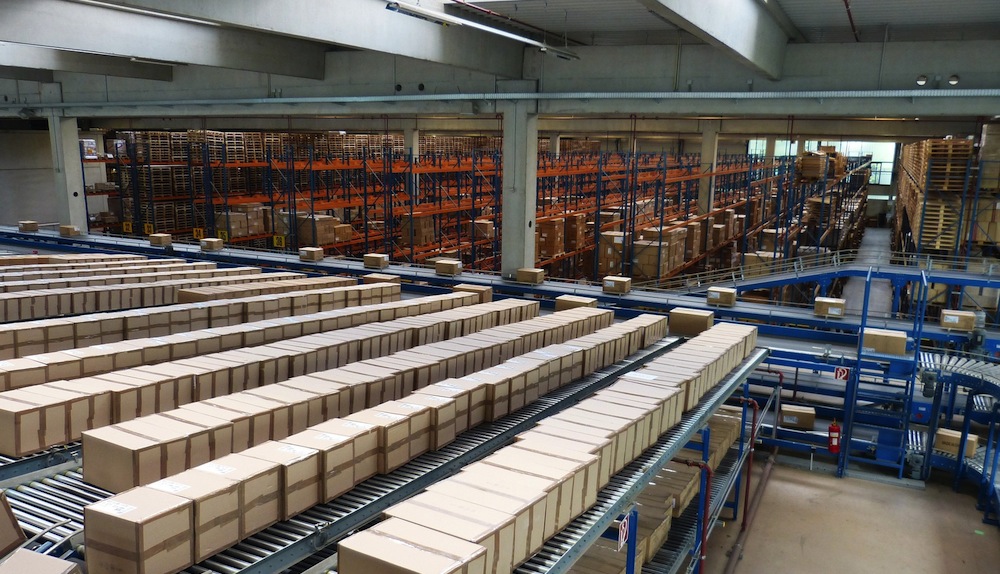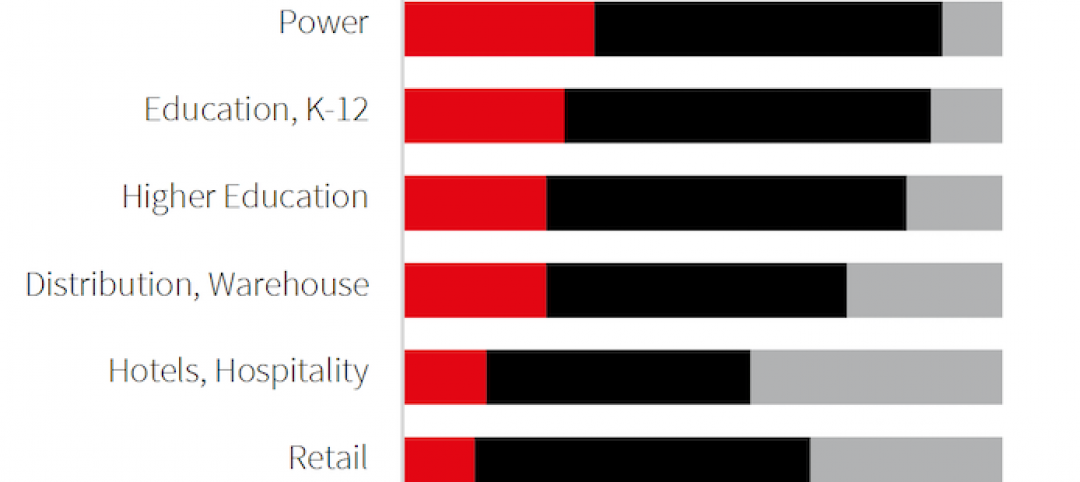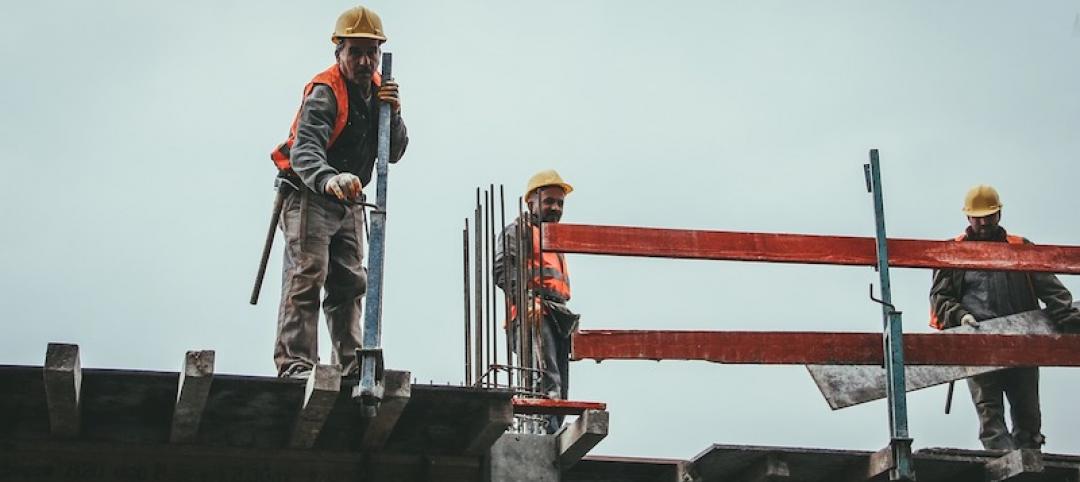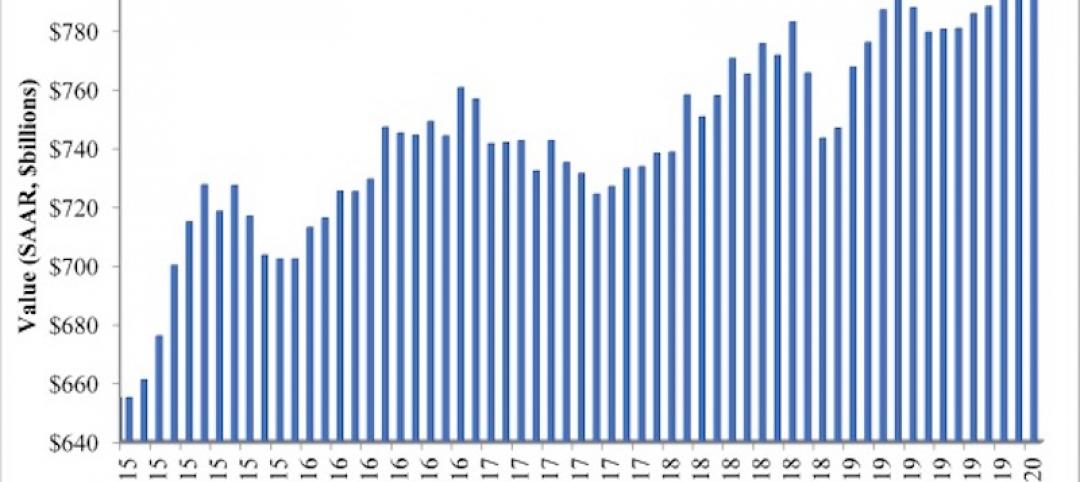“Ignore the Dow. Focus on the fundamentals.”
That’s Cushman & Wakefield’s sanguine advice in its latest “U.S. Macro Report,” in which the real estate services giant offers a bullish forecast about America’s economy, as well as the investment climate for real estate construction and transactions.
C&W provides a positive spin on investors’ two main concerns right now: the impact of China’s slower economic growth and tumbling global oil prices. The report points out that U.S. direct investment in China is currently $65 billion versus the $6 trillion the U.S. has invested globally. Only 9.2% of U.S. exports are sent to China, and exports account for only around 10% of all goods and services produced within the country. “The macroeconomic consequences of a hard landing in China tend to be overstated,” says C&W, which believes that China’s GDP growth could fall below 3% (it was 6.9% in 2015, a 25-year low) without causing a recession in the U.S.
Oil price erosion is a more significant threat to C&W’s baseline outlook, the report concedes. But it believes that declines in oil prices are ultimately a net positive for the U.S. economy because those declines spur increased consumption. “Every penny decline in retail gasoline prices adds more than $1 billion to consumer spending over the course of the year, according to Moody’s Analytics,” states the report. Its forecast calls for oil prices to average just over $40 per barrel in 2016. “That will add about 50 extra basis points to U.S. GDP growth, creating up to 23.8 million sf in additional demand for office and industrial space.”
C&W foresees a “quite healthy” 2.4% increase in U.S. GDP this year. It expects 2.6 million and 2.3 million nonfarm jobs to be created in 2016 and 2017, bringing the unemployment rate down to around 4.5%. “Wage growth and inflation should trend upwards more meaningfully at the same time, helping to buoy retail sales, consumer spending and consumer confidence.”
People are also getting their personal balance sheets in order. The household debt ratio—which measures debt affordability—is at its lowest point since 1980. Wages and total compensation rose by over 2% in 2015, the first time since 2008 those indices exceeded 2% growth.
A more confident, higher-spending consumer should benefit the industrial sector, which has enjoyed record-setting demand for warehouse and distribution space over the past few years. C&W projects that 220 million sf of space will be added this year, despite declines in manufacturing activity. “Overall vacancy will tighten further, falling from 7.5% in 2015 to 7% in 2016. This is on par with the tightest conditions ever observed in the sector; in 2000, the national vacancy rate was 6.9%,” the report states.
C&W expects that the economy will create 713,000 office-using jobs this year, and 666,000 in 2017. These estimates are slightly down from the 812,000 office jobs created last year, and C&W does expect slower aggregate demand for office space, albeit with a lag. Over the next two years, it expects 140 million sf of new office product to be delivered versus the almost 160 million sf of space that will be absorbed. “As a result, vacancy rates will continue to decline, falling from 14.2% in 2015 to 13% in 2017, the lowest annual reading since 2007.” Rent growth will accelerate to 4% this year and 4.5% next year. By 2018, new development should catch up with decelerating demand.
Positive consumer spending should also help fuel the retail sector. Net absorption is expected to average around its 2015 level (40 million sf) for the next two years, and focus on Class A product or new space. Vacancy is expected to decline from 7.7% in 2015 to 7% in 2016, and bounce below the 7% mark at times during the year.
C&W remains convinced that investors would continue to perceive the U.S. as a “safe haven” for stability and expected returns. Investors certainly showed their confidence in the U.S. economy in 2015, when investment sales volumes in the real estate sector increased by nearly 24% to $534 billion, just shy of the previous peak in 2007. “Capital markets activity is expected to be strong in 2016 and 2017 and should surpass prior peak levels assuming no major shock to the system.”
The developer acknowledges that a prolonged downturn in equity markets could short-circuit the U.S. economy, hit the consumer and end the expansion. But it doesn’t think that scenario is probable. “The fundamentals of the U.S. economy and the property markets remain on solid footing.”
Related Stories
Market Data | Mar 26, 2020
Senate coronavirus relief bill's tax and lending provisions will help construction firms, but industry needs additional measures
Construction officials say measure will help firms cope with immediate cash flow crunch, but industry needs compensation for losses.
Market Data | Mar 25, 2020
Engineering and construction materials prices fall for first time in 40 months on coronavirus impacts, IHS Markit says
Survey respondents reported falling prices for five out of the 12 components within the materials and equipment sub-index.
Market Data | Mar 23, 2020
Coronavirus will reshape UAE construction
The impact of the virus has been felt in the UAE, where precautionary measures have been implemented to combat the spread of the virus through social distancing.
Coronavirus | Mar 20, 2020
Pandemic has halted or delayed projects for 28% of contractors
Coronavirus-caused slowdown contrasts with January figures showing a majority of metro areas added construction jobs; Officials note New infrastructure funding and paid family leave fixes are needed.
Market Data | Mar 17, 2020
Construction spending to grow modestly in 2020, predicts JLL’s annual outlook
But the coronavirus has made economic forecasting perilous.
Market Data | Mar 16, 2020
Grumman/Butkus Associates publishes 2019 edition of Hospital Benchmarking Survey
Report examines electricity, fossil fuel, water/sewer, and carbon footprint.
Market Data | Mar 12, 2020
New study from FMI and Autodesk finds construction organizations with the highest levels of trust perform twice as well on crucial business metrics
Higher levels of trust within organizations and across project teams correlate with increased profit margins, employee retention and repeat business that can all add up to millions of dollars of profitability annually.
Market Data | Mar 11, 2020
The global hotel construction pipeline hits record high at 2019 year-end
Projects currently under construction stand at a record 991 projects with 224,354 rooms.
Market Data | Mar 6, 2020
Construction employment increases by 43,000 in February and 223,000 over 12 months
Average hourly earnings in construction top private sector average by 9.9% as construction firms continue to boost pay and benefits in effort to attract and retain qualified hourly craft workers.
Market Data | Mar 4, 2020
Nonresidential construction spending attains all-time high in January
Private nonresidential spending rose 0.8% on a monthly basis and is up 0.5% compared to the same time last year.

















